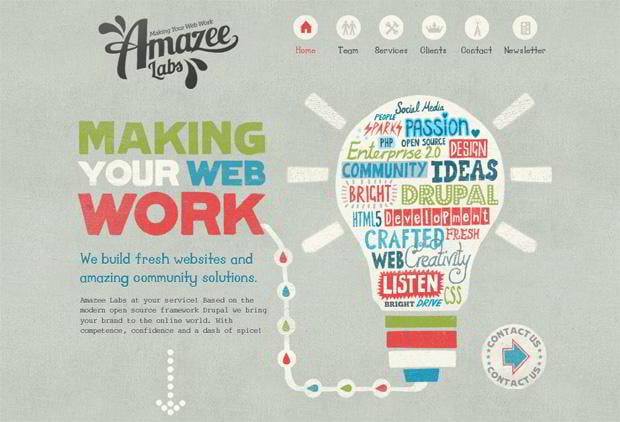Fascinated In Discovering How Website Style Has Altered For Many Years? Check Out The Trip
Fascinated In Discovering How Website Style Has Altered For Many Years? Check Out The Trip
Blog Article
click for source Created By-Kahn Stender
In the past, web sites were straightforward and concentrated on information. Navigating was direct, and design was for desktops. Now, user experience is key. Information overviews styles for very easy navigation. Responsive formats fit various gadgets. Today, dark mode minimizes stress, and minimalist menus improve navigating. Interactive attributes engage users, and strong visuals attract attention. AI combination increases interaction. See just how design has advanced to enhance your online journey.
Very Early Days of Web Design
In the very early days of website design, simpleness preponderated. Web sites were basic, with limited shades, typefaces, and layouts. The focus was on offering information rather than fancy visuals. Users accessed the net via slow-moving dial-up links, so rate and performance were vital.
Navigation food selections were straightforward, normally situated on top or side of the web page. Sites were designed for home computer, as mobile browsing wasn't yet widespread. Web content was king, and developers focused on very easy readability over complex design components.
HTML was the key coding language made use of, and developers needed to function within its restraints. Animations and interactive functions were very little compared to today's requirements. https://www.google.com/maps/place/Moon+and+Owl+Marketing/@32.9757271,-106.5344695,1840583m/data=!3m1!1e3!4m6!3m5!1s0x864ddeaa4179705b:0x488d41d2cc6b9750!8m2!3d32.9757271!4d-97.5696258!16s%2Fg%2F11b6mpccrg?entry=ttu&g_ep=EgoyMDI1MDIxMS4wIKXMDSoJLDEwMjExNDUzSAFQAw%3D%3D were fixed, with little dynamic content or personalized customer experiences.
Increase of User-Focused Layout
With the development of site design, a shift towards user-focused layout concepts has come to be significantly popular. Today, developing sites that prioritize individual experience is crucial for engaging site visitors and accomplishing organization goals. User-focused layout includes understanding the requirements, preferences, and habits of your target audience to tailor the internet site's layout, content, and features appropriately.
Designers now conduct comprehensive research study, such as customer studies and usability testing, to gather understandings and responses directly from customers. This data-driven strategy aids in producing user-friendly navigating, clear calls-to-action, and aesthetically appealing user interfaces that reverberate with visitors. By positioning the user at the center of the layout procedure, sites can supply a more individualized and delightful experience.
Receptive design has actually also emerged as a vital element of user-focused style, ensuring that sites are optimized for different devices and screen sizes. This flexibility enhances ease of access and functionality, satisfying the diverse ways individuals engage with websites today. In essence, the surge of user-focused design signifies a change towards producing electronic experiences that focus on the needs and expectations of the end customer.
Modern Trends in Web Design
Explore the most up to date fads shaping website design today. One popular pattern is dark setting style, supplying a sleek and modern-day look while decreasing eye stress in low-light settings. One more key trend is minimal navigating, streamlining menus and enhancing customer experience by focusing on essential elements. Incorporating micro-interactions, such as computer animated switches or scrolling effects, can create a much more appealing and interactive site. Responsive layout continues to be vital, guaranteeing smooth customer experiences throughout various gadgets. Furthermore, utilizing bold typography and asymmetrical formats can include visual rate of interest and accentuate particular content.
Incorporating AI innovation, like chatbots for client support or tailored suggestions, boosts user engagement and streamlines processes. Accessibility has additionally end up being a substantial trend, with developers focusing on comprehensive style practices to accommodate diverse individual requirements. Welcoming sustainability by enhancing internet site performance for speed and performance is one more arising pattern in web design. Teaming up with customer responses and data analytics to iterate and enhance design continually is important for staying relevant in the ever-evolving digital landscape. By embracing these contemporary patterns, you can create a visually attractive, straightforward site that reverberates with your audience.
Conclusion
As you reflect on the advancement of web site style from the early days to currently, you can see exactly how user-focused style has actually ended up being the driving pressure behind contemporary fads.
Accept the trip of change and adaptation in web design, always keeping the user experience at the forefront.
Stay present with the most recent patterns and technologies, and never quit evolving your technique to develop aesthetically sensational and user-friendly websites.
Progress, adjust, and produce - the future of website design remains in your hands.
